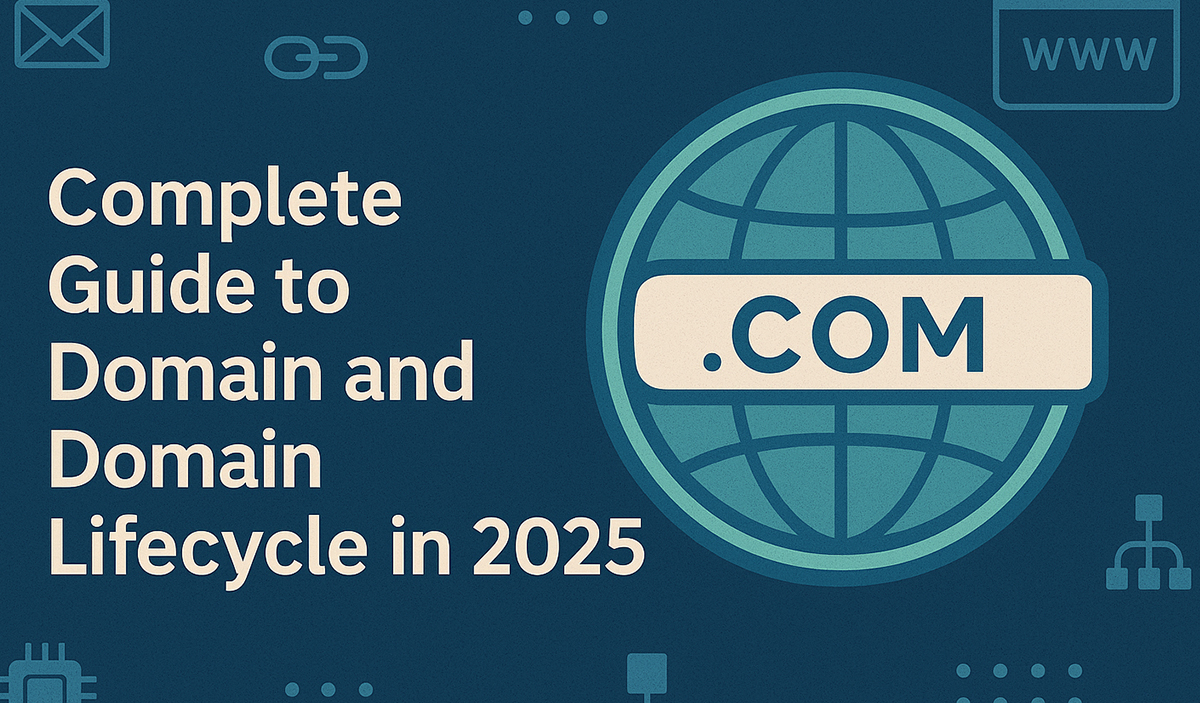No products in the cart.
 A domain name defines how users find and recognize your website online. Whether you run a business, personal blog, or e-commerce platform, choosing and managing your domain effectively is crucial. Understanding the domain lifecycle ensures you don’t lose your valuable domain due to negligence or oversight. In this blog, we will delve into what a domain is, why it’s essential, and how its lifecycle unfolds.
A domain name defines how users find and recognize your website online. Whether you run a business, personal blog, or e-commerce platform, choosing and managing your domain effectively is crucial. Understanding the domain lifecycle ensures you don’t lose your valuable domain due to negligence or oversight. In this blog, we will delve into what a domain is, why it’s essential, and how its lifecycle unfolds.What is a Domain?
A domain is your website’s address on the internet, such as actsupport.com. It is part of the Domain Name System (DNS), translating human-readable names into IP addresses that computers use to identify each other. Domains consist of a second-level domain (SLD) (like ‘actsupport’) and a top-level domain (TLD) (like ‘.com’).
In 2025, businesses must carefully choose their domain names to establish credibility, attract customers, and improve SEO ranking. Selecting the right domain extension can significantly impact your online presence, especially with new gTLDs (generic top-level domains) like .shop, .tech, and .app gaining popularity.
Domain Lifecycle Explained
The domain lifecycle is the series of stages a domain goes through from registration to deletion. Understanding this lifecycle helps in proactive domain management and reduces the risk of losing your domain.
- Registration Period: The first stage where the domain is available for purchase through a domain registrar. You can register a domain for 1 to 10 years.
- Long-tail keyword: how to register a domain name for business in 2025
- Active Period: Your domain is now live and operational. During this period, you can host websites, emails, and other services. Regular monitoring and timely renewal are crucial.
- Long-tail keyword: how to keep your domain active and secure
- Expiration Period: If you fail to renew your domain before its expiration date, it enters this phase. The domain enters an inactive state at this stage, but you can still reclaim it through renewal.
- Long-tail keyword: what happens if your domain expires and how to recover it
- Grace Period: After expiration, most registrars provide a grace period (usually 30-45 days) where you can renew the domain without additional fees. Your website may remain down during this time.
- Long-tail keyword: how to renew a domain during the grace period
- Redemption Period: Failing to renew during the grace period triggers the redemption phase, which typically lasts around 30 days. Renewing during this period typically incurs an additional fee.
- Long-tail keyword: how to recover a domain from redemption period
- Pending Deletion: After the redemption period, the domain enters the pending deletion stage, lasting about 5-7 days. Once this period ends, the domain is deleted and becomes available for public registration.
- Long-tail keyword: what to do if your domain is pending deletion
Key Tips to Maintain Domain Ownership
- Enable Auto-Renewal: Prevent accidental domain loss by activating the auto-renew feature.
- Update Contact Information: Keep your registrant information up to date to receive renewal alerts.
- Monitor Domain Status: Regularly check your domain’s status to ensure it is active.
- Plan for Multi-Year Registration: Lock in your domain long-term to avoid the inconvenience of yearly renewals.
Why Domain Management Matters
Failing to renew your domain on time can lead to service disruptions, loss of SEO ranking, and potential domain squatting, where others may purchase your expired domain.
Check out our newest blog entry (Fix WordPress cURL Error 52 Quickly)
Subscribe to get free blog content to your Inbox


